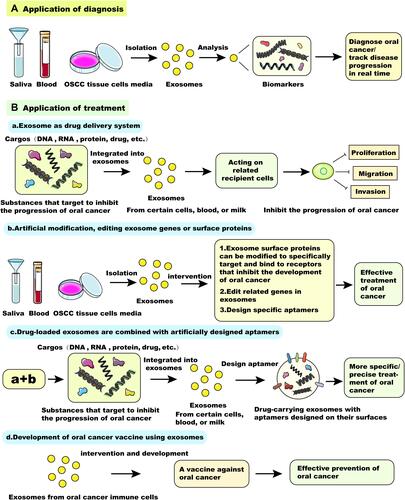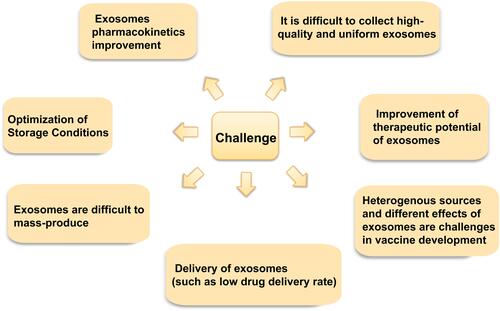Figures & data
Figure 1 Exosome biogenesis. Exosomes contain DNA, RNA, and other proteins. The release of exosomes into the extracellular environment involves three distinct steps: exosome biogenesis, loading and transporting of related substances, and release. The plasma membrane buds inward to form early endosomes, which can also be created by the trans-Golgi network. Early endosomes are loaded and fused to form late endosomes, and the endosomal membrane invaginates to form intraluminal vesicles. Exosomes are released outside the cell when multivesicular bodies merge with the plasma membrane.
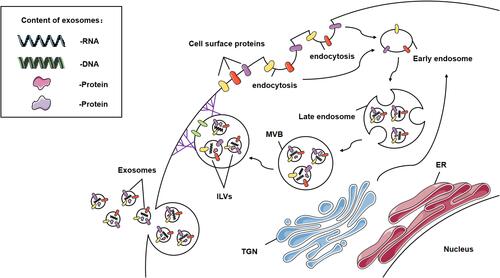
Table 1 Exosome Isolation Methods
Figure 2 Exosomes as biomarker sources for oral cancer diagnosis. (A) Salivary exosomes in patients with oral cancer as potential biomarkers for the diagnosis of oral cancer. (B) Plasma or serum purified exosomes in patients with oral cancer as potential biomarkers for the diagnosis of oral cancer.
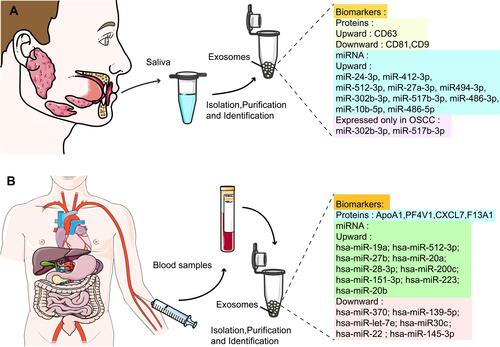
Table 2 Status of Exosomes in Oral Cancer Treatment
Figure 3 Summary of exosomes as potential targets for oral cancer therapy. (A) Chemotherapeutic resistance and sensitivity: ① THP-1 and PHM-derived exosomes reduce the susceptibility of oral squamous cell carcinoma (OSCC) OSCC cells to chemotherapeutics via the activation of the AKT/GSK 3β signalling pathway.② Exosomes produced from cisplatin-resistant OSCC cells transmit miR-21 to OSCC parent cells to induce cisplatin resistance. ③ normal tongue epithelial cells transfer exosomal miR-200c to HSC-3DR cells and combine with TUBB3 and PPP2R1B to increase the sensitivity of HSC-3DR cells to docetaxel. (B) Angiogenesis: ④ Exosomal miR-221 promotes the angiogenesis and migration of human umbilical vein endothelial cells by negatively regulating PIK3R1. ⑤ Additionally, the expression of exosomal miR-210-3p and ephrinA3 can be upregulated by the PI3K/AKT pathway to promote oral cancer angiogenesis. (C) Modulation of immune responses: ⑥ Oral carcinoma-derived exosome NAP1 increases the cytotoxicity of natural killer (NK) cells through the IRF-3 pathway and enhances the tumour suppressive function of NK cells. ⑦ However, OSCC cell-derived exosomes can induce the polarization or transformation of macrophages to the M1- or M2-like phenotype by activating related pathway signals, increasing the invasion and proliferation of OSCC. ⑧ Exosomal PD-L1 in the plasma of patients with oral cancer can drive immunosuppression and contribute to immune escape of oral cancer cells. (D) Proliferation and migration: ⑨ OSCC cells secrete many epidermal growth factor receptor (EGFR)-expressing exosomes in response to EGF stimulation. Subsequently, EGFR-rich exosomes can enter epithelial cells and promote epithelial–mesenchymal transformation, thereby promoting the invasion and migration of OSCC. ⑩ Activation of lnc-CAF by IL-33 can induce OSCC cell proliferation. ⑪ OSCC-derived exosomes are absorbed by OSCC cells and considerably boost the invasion, propagation, and transplantation of OSCC by activating the JNK-1/2, PI3K/Akt and MAPK/ERK pathways.⑫ Exosomal miR-6887-5p inhibits tumour growth and OSCC cell colony formation.⑬ Exosomal miR-1294 can suppress the growth of OSCC cells by regulating the c-Myc pathway.⑭ HBMSC-derived exosomal miR-101-3p can suppress the invasion, propagation, and transplantation of oral cancer cells by downregulating COL10A1, thus inhibiting the progression of oral cancer. In conclusion, exosomal miR-21, miR-200c, miR-221, miR-210-3p, NAP1, THBS1, miR-23a-3p, CMTM6, miR-29a-3p, PD-L1, EGFR, lnc-CAF, miR-6887-5p, miR-1294, miR-101-3p, OSCC-derived exosomes and macrophage-derived exosomes are potential targets for oral cancer treatment.
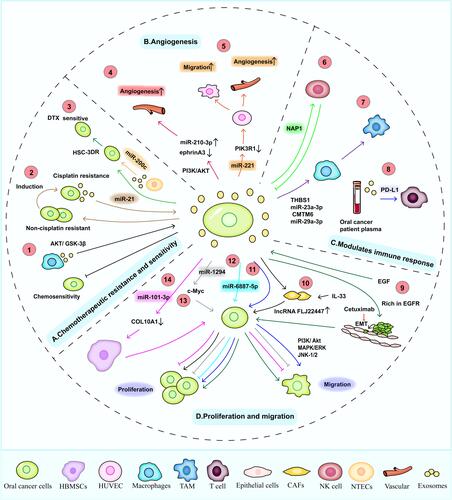
Figure 4 Opportunities of exosomes in diagnosis and treatment of oral cancer. (A) Application of diagnosis. (B) Application of treatment. A. Exosome as drug delivery system. B. Artificial modification, editing exosome genes or surface proteins. c. Drug-loaded exosomes are combined with artificially designed aptamers. d. Development of oral cancer vaccine using exosomes.
